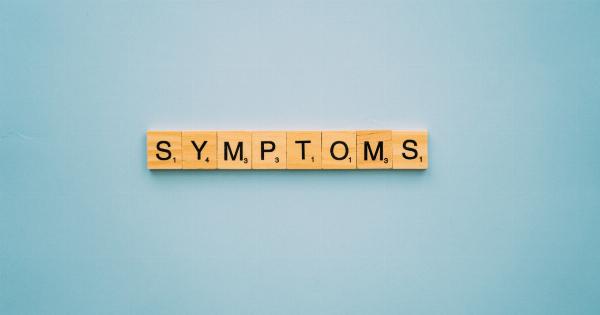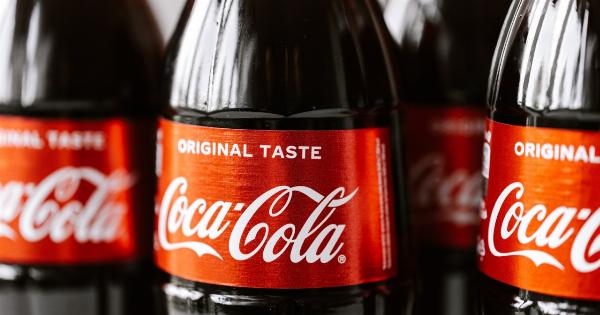Mid-abdominal pain can be a symptom of various major illnesses that require immediate medical attention. It is important to be aware of the potential causes of this type of pain and seek appropriate medical assistance when necessary.
This article will explore some of the common major illnesses that can present with mid-abdominal pain, along with their symptoms, diagnostic methods, and available treatments.
Gastritis
Gastritis is the inflammation of the lining of the stomach. It can cause mid-abdominal pain along with symptoms such as nausea, vomiting, bloating, and a burning sensation in the upper abdomen.
Common causes of gastritis include the use of certain medications, excessive alcohol consumption, stress, and infection with the Helicobacter pylori bacteria. Diagnosis is usually done through a combination of medical history, physical examination, and tests such as endoscopy or blood tests. Treatment involves the use of medications to reduce stomach acid, antibiotics to eradicate H.
pylori infection if present, and lifestyle modifications.
Peptic Ulcer Disease
Peptic ulcer disease refers to sores that develop in the lining of the stomach or the first part of the small intestine, known as the duodenum.
These ulcers can cause mid-abdominal pain, often described as a burning or gnawing sensation, that may come and go. Other symptoms include bloating, heartburn, nausea, and unintentional weight loss. Peptic ulcers can be caused by an infection with H.
pylori bacteria, excessive use of nonsteroidal anti-inflammatory drugs (NSAIDs), smoking, and excessive alcohol consumption. Diagnosis may involve endoscopy or tests to detect H. pylori infection. Treatment options include acid-reducing medications, antibiotics to eradicate H. pylori, and lifestyle changes.
Gallstones
Gallstones are solid deposits that form in the gallbladder, a small organ located below the liver. They can cause mid-abdominal pain, often on the right side, after eating fatty or greasy foods. The pain may be severe and radiate to the back or shoulder.
Other symptoms include nausea, vomiting, bloating, and jaundice (yellowing of the skin and eyes). Diagnosis is typically made through imaging tests such as ultrasound or computed tomography (CT) scan. Treatment options depend on the severity and symptoms, but may include medications to dissolve gallstones or surgical removal of the gallbladder.
Appendicitis
Appendicitis refers to the inflammation of the appendix, a small pouch-like structure located at the beginning of the large intestine. It can cause mid-abdominal pain that gradually moves to the lower right abdomen.
The pain is often intense and may be accompanied by fever, loss of appetite, nausea, and vomiting. Prompt medical attention is crucial as untreated appendicitis can lead to a rupture, which can be life-threatening. Diagnosis involves a physical examination, blood tests, and imaging tests such as ultrasound or CT scan.
Treatment usually involves surgical removal of the appendix (appendectomy).
Kidney Stones
Kidney stones are hard deposits that form in the kidneys and can cause severe mid-abdominal or flank pain. The pain often radiates to the groin and is frequently described as one of the worst pains a person can experience.
Other symptoms include frequent urination, blood in the urine, and cloudy or foul-smelling urine. Diagnosis is made through imaging tests such as ultrasound or CT scan. Treatment options include drinking plenty of fluids to help pass the stone, pain medications, and in some cases, surgical intervention.
Diverticulitis
Diverticulitis is the inflammation or infection of small pouches (diverticula) that can form in the lining of the colon.
It can cause mid-abdominal pain that is often accompanied by tenderness on the left side of the abdomen, fever, constipation or diarrhea, and sometimes rectal bleeding. Diagnosis is typically made through a combination of medical history, physical examination, and imaging tests such as CT scan. Treatment may involve antibiotics, dietary changes, and in severe cases, surgical intervention.
Pancreatitis
Pancreatitis refers to the inflammation of the pancreas, an organ responsible for producing digestive enzymes and certain hormones. It can cause mid-abdominal pain that may radiate to the back or chest.
The pain is often severe and can be accompanied by nausea, vomiting, fever, rapid pulse, and abdominal tenderness. Pancreatitis can be caused by gallstones, alcohol abuse, certain medications, infections, and genetic factors. Diagnosis is usually made through blood tests, imaging tests such as ultrasound or CT scan, and sometimes endoscopic procedures.
Treatment involves hospitalization, intravenous fluids, pain management, and addressing the underlying cause.
Intestinal Obstruction
Intestinal obstruction occurs when there is a blockage in the intestine, preventing the normal passage of food and stool.
It can cause mid-abdominal pain along with symptoms such as nausea, vomiting (often green or yellow in color), bloating, and constipation. Intestinal obstruction can be caused by various factors including adhesions (scar tissue), hernias, tumors, and intestinal twisting (volvulus). Diagnosis is made through physical examination, medical history, and imaging tests such as X-rays or CT scan.
Treatment options depend on the cause and severity of the obstruction, and may include medications, bowel rest, and surgical intervention.
Endometriosis
Endometriosis is a condition where the tissue lining the uterus grows outside of it, causing inflammation and pain.
It can cause mid-abdominal pain that occurs before or during menstruation and may be accompanied by heavy or irregular periods, pain during intercourse, and difficulty getting pregnant. Diagnosis is usually made through a combination of medical history, pelvic examination, and imaging tests such as ultrasound or MRI. Treatment options include pain medications, hormonal therapies, and surgical intervention for severe cases.
Pelvic Inflammatory Disease
Pelvic inflammatory disease (PID) refers to the infection of the female reproductive organs, including the uterus, fallopian tubes, and ovaries.
It can cause mid-abdominal pain along with symptoms such as pelvic pain, abnormal vaginal discharge, painful urination, and fever. PID is often caused by sexually transmitted infections such as chlamydia or gonorrhea. Diagnosis involves a combination of medical history, pelvic examination, and laboratory tests.
Treatment usually involves antibiotics to clear the infection and may require hospitalization in severe cases.
Hernias
Hernias occur when an organ or fatty tissue pushes through a weakened spot in the surrounding muscle or connective tissue. They can cause mid-abdominal pain, particularly when the hernia becomes trapped or incarcerated.
Other symptoms may include a visible bulge, pain during lifting or physical exertion, and a feeling of heaviness or pressure in the abdomen. Diagnosis is made through physical examination and sometimes imaging tests such as ultrasound or CT scan. Treatment options depend on the size and location of the hernia and may include watchful waiting, lifestyle modifications, or surgical repair.






























